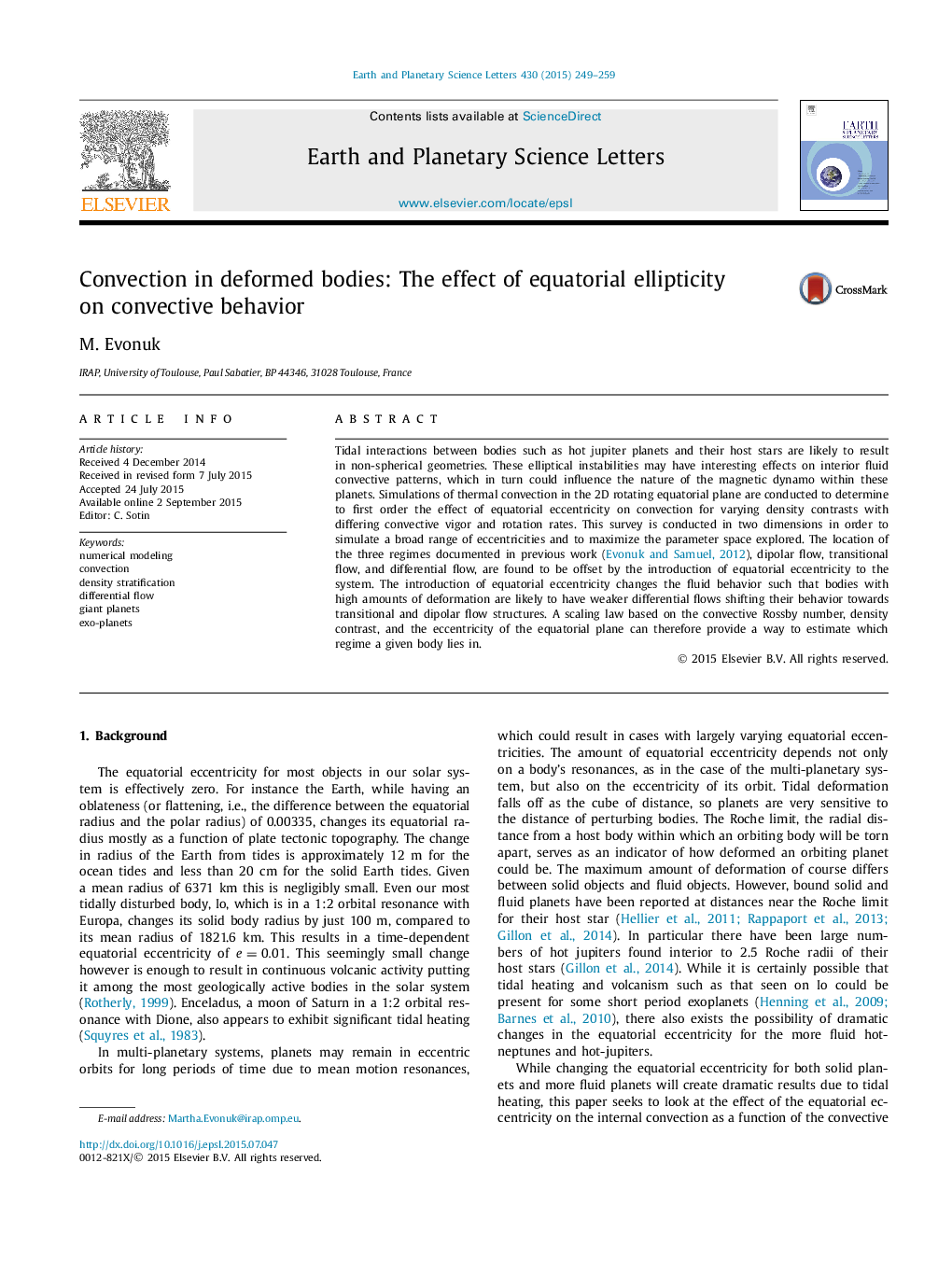| Article ID | Journal | Published Year | Pages | File Type |
|---|---|---|---|---|
| 6427935 | Earth and Planetary Science Letters | 2015 | 11 Pages |
â¢I model the effect of varying equatorial eccentricity on convection.â¢Increasing eccentricity shifts fluid behavior towards transitional flow.â¢Flow regime can be predicted from Roc, density contrast, and eccentricity.
Tidal interactions between bodies such as hot jupiter planets and their host stars are likely to result in non-spherical geometries. These elliptical instabilities may have interesting effects on interior fluid convective patterns, which in turn could influence the nature of the magnetic dynamo within these planets. Simulations of thermal convection in the 2D rotating equatorial plane are conducted to determine to first order the effect of equatorial eccentricity on convection for varying density contrasts with differing convective vigor and rotation rates. This survey is conducted in two dimensions in order to simulate a broad range of eccentricities and to maximize the parameter space explored. The location of the three regimes documented in previous work (Evonuk and Samuel, 2012), dipolar flow, transitional flow, and differential flow, are found to be offset by the introduction of equatorial eccentricity to the system. The introduction of equatorial eccentricity changes the fluid behavior such that bodies with high amounts of deformation are likely to have weaker differential flows shifting their behavior towards transitional and dipolar flow structures. A scaling law based on the convective Rossby number, density contrast, and the eccentricity of the equatorial plane can therefore provide a way to estimate which regime a given body lies in.
